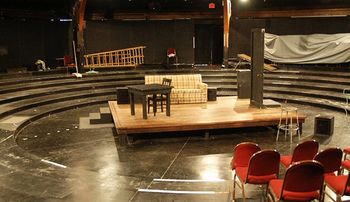Welcome to Citizendium: Difference between revisions
imported>John Stephenson (history link removed - seems to be defunct and would have to be updated daily) |
imported>John Stephenson (Being bold by replacing the (dead or unmaintained) Twitter feed links with URLs for live accounts) |
||
| Line 19: | Line 19: | ||
* See our own [[Citizendium|Citizendium article]] for our history | * See our own [[Citizendium|Citizendium article]] for our history | ||
*[[CZ:Why Citizendium?|Why Citizendium?]] | [[CZ:Myths and Facts|Myths and Facts]] | [[CZ:Why_I_contribute_to_CZ|Why we contribute to CZ]] | *[[CZ:Why Citizendium?|Why Citizendium?]] | [[CZ:Myths and Facts|Myths and Facts]] | [[CZ:Why_I_contribute_to_CZ|Why we contribute to CZ]] | ||
* Follow us on [http://friendfeed.com/citizendium Friendfeed], Twitter ([http://twitter.com/ | *Follow us on [http://friendfeed.com/citizendium Friendfeed], Twitter ([http://twitter.com/TheCitizendium general news]; [http://twitter.com/CzPages newly-edited pages]), [http://www.facebook.com/citizendium Facebook] or [http://plus.google.com/110670782401057017988 Google+] | ||
==='''Join us'''=== | ==='''Join us'''=== | ||
*[[Special:RequestAccount|Join up here]] and [[CZ:How to start a new_article|start a new article]] or [[CZ:Cleanup|improve]] existing ones. | *[[Special:RequestAccount|Join up here]] and [[CZ:How to start a new_article|start a new article]] or [[CZ:Cleanup|improve]] existing ones. | ||
Revision as of 04:06, 5 April 2012
Click on first button above for full list of workgroups
An encyclopedia project—and more!Welcome to Citizendium, an endeavor to achieve the highest standards of writing, reliability, and comprehensiveness through a unique collaboration between Authors and Editors. We welcome people from all walks of life who want to share their knowledge and expertise freely by writing well-researched and authoritative articles. Please read through our easy registration procedures, then join us.
Join us
From HERE, you can get started, get technical help, see our policies, and explore our articles and organization.
|
|
||||||||||||||||||||
